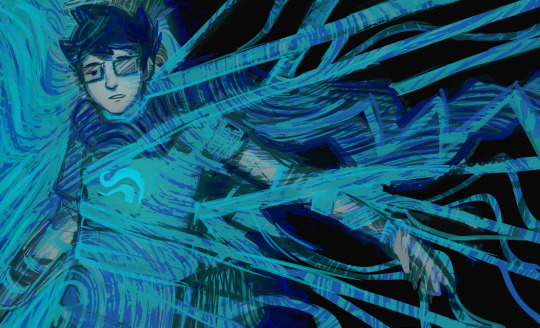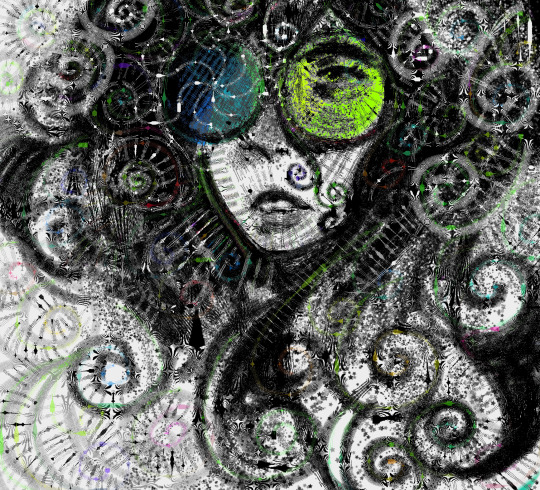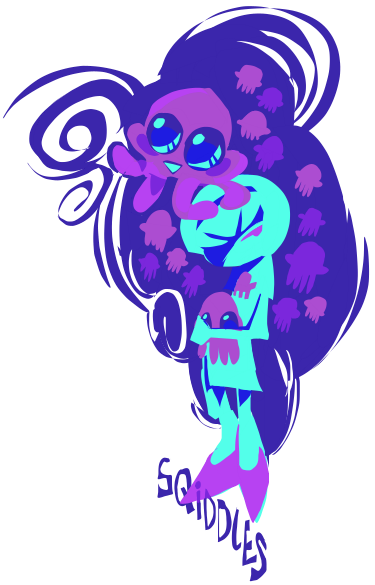She/They .23. Greyace/Biromantic. Homestuck/Mystic/Messenger/FE3H/Random Tumblr Posts & Fanart
Don't wanna be here? Send us removal request.
Text
Saints, Gods and Dragons in the murals of Fire Emblem: Three Houses
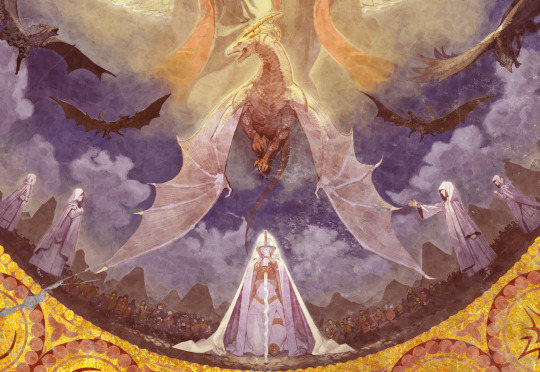
Fire Emblem: Three Houses is a large game that has subtle world building and thematic details hidden all over and in this post I want to point a few out, mainly concerning the depictions of Seiros, Sothis and the four Saints, as well as some related things. Major spoilers for Three Houses and Fire Emblem Warriors: Three Hopes after the cut.
The hooded Saint
Saint Seiros is the identity Archbishop Rhea of the Church of Seiros originally went under during the War of Heroes, which ended with the Adrestrian Empire and Church of Seiros coming to rule over Fódlan. The war ended in the Imperial year 98, but Seiros stuck around for at least a century more until the completion of Garreg Mach Monastery in Imperial year 195.
Some time after this, Seiros would "die" and the Church of Seiros went on to be led by Archbishops, of whom at least a substantial portion were alternate identities of Seiros. This is made most apparent in Sylvain and Ignatz's support line in Three Hopes, where they discuss a painting of an Archbishop who ruled around the Imperial Year 961. During the support line, the painting is noted to bear a resemblance to Rhea and it also looks the part.

Saint Seiros meanwhile is a religious figure revered throughout Fódlan, but she is never noted to look like Rhea despite them being the same person, so why is that? The answer lies in a piece of promotional art for Three Houses that depicts an in-universe mural. Near the bottom of the mural, a hooded figure can be seen that is the Saint Seiros. This is evident from the clothing she wears under her robe being the garb Seiros wears, as well as the wavy Sword of Seiros she holds.

This is further driven home by the murals shown at the start of each chapter in Three Houses, some of which depict the hooded Seiros as well. The one for Chapter 10, Where the Goddess Dwells, for example, shows a variation of the promotional mural. This variation also depicts the Immaculate One, Seiros's Nabatean form, which are thought to be separate beings in the religion of the Church of Seiros.
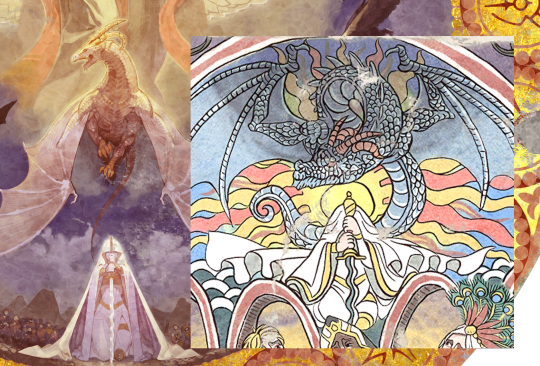
The mural at the start of Chapter 2, Familiar Scenery, meanwhile shows a statue of the hooded Seiros defeating Nemesis. The familiar Sword of Seiros can once again be seen wielded by the hooded figure.
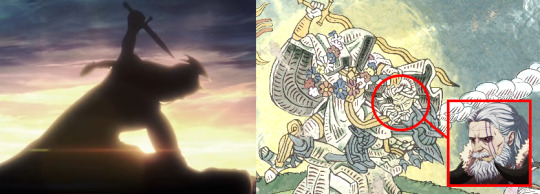
In-universe, it seems the face of Saint Seiros isn't known, likely a deliberate choice so that Rhea could continue to lead the Church of Seiros as its various Archbishops even after the 'death' of Saint Seiros.
The depiction of the Goddess and the Saints
While she appears as a child throughout Three Houses and Three Hopes, in the murals of the Church of Seiros, Sothis is depicted as a grown woman. In the large promotional mural, she seems to be the winged woman that takes up the bulk of the mural, as Seiros is depicted near the mural's bottom. Whether the mural depicts an idealized version of Sothis or the actual form she took prior to her murder by Nemesis is something I am not sure of yet. This depiction of Sothis can also be seen in the murals at the start of Chapters 9 (The Cause of Sorrow) and 4 (The Goddess's Rite of Rebirth). Of note is that Sothis is often depicted alongside a star symbol, likely representing the Blue Sea Star, her place of origin.

The mural at the start of Chapter 4 shows several other figures alongside Sothis, which are Seiros in her usual hooded depiction and the Four Saints that fought alongside her in the War of Heroes. The Saints in the mural resemble the statues that were built of them, not necessarily their true appearance (as is the case with Cethleann/Flayn).

The Saints, who are in truth Nabateans, also seem to appear elsewhere, specifically in their Nabatean forms. The crest of the Church of Seiros has a dragon depicts a white dragon that one at first may assume to be the Immaculate One (aka Seiros). However, this dragon lacks some key features of Immaculate One, most notable the Immaculate One's curled horns. Its head shape is also subtly different.

Instead, this may be the otherwise unseen Nabatean form of Saint Cichol/Seteth, which is indicated by the rest of the symbol of the Church of Seiros. Atop the symbol rests a mitre resembling the one worn by Cichol in his statue. In Three Hopes, it was revealed the name of this Nabatean form is the "Hammer of Judgment".
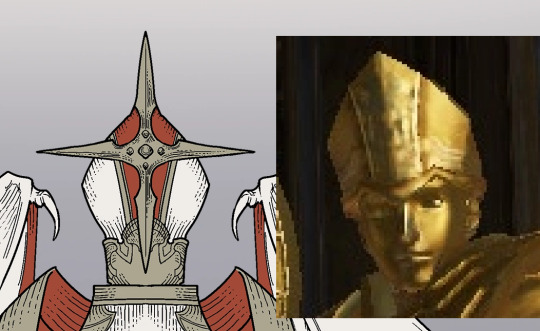
The flags of Knights of Seiros, as well as the Holy Kingdom of Faerghus, depict a Griffon-like creature on their flags. This may be the Wind Caller, Macuil's Nabatean form, though there are some differences in their designs, most notably the tail, hind legs and head horns. They could just be generic Griffons, which have appeared in Fire Emblem: Awakening and Fire Emblem: Engage, but those settings are distinct from the setting of Three Houses/Three Hopes and generic Griffons do not appear in Fódlan. Thematically at least it would make sense for Macuil to be depicted on the Knights of Seiros's flag, given Macuil made weapons for Seiros and the other Saints during the War of Heroes and the Knights of Seiros act as the protectors and metaphorical weapons of the church. The design differences remain notable however.
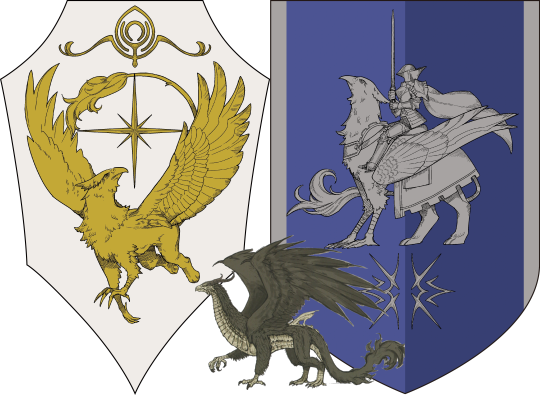
#Just to add to this there is a statue showing Serios' face in three houses down in abyss#its hard to spot but its there if you look#fe3h
120 notes
·
View notes
Text
i didn't say it was good, i said it has bewitched me body and soul
70K notes
·
View notes
Text


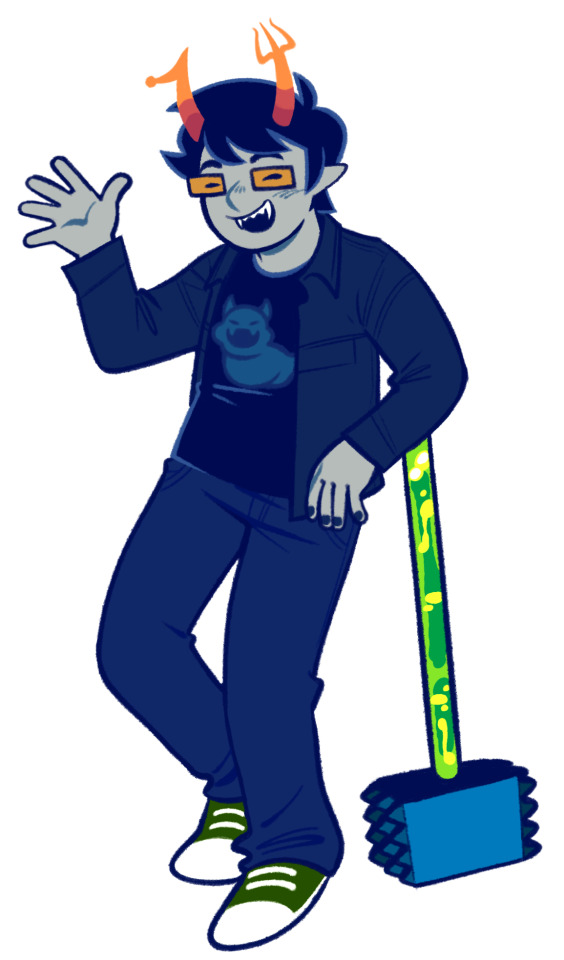
I am so fucking picky when it comes to troll designs for the kids so i made my own.
4K notes
·
View notes
Text
Fire Emblem Three Houses: The Revolutionary vs The Reactionary
Fire Emblem Three Houses is a rich and complex story. There are four factions to join in this game, and they’re summarized excellently by this chart(credit to /r/FireEmblem)

Generally speaking, in terms of the game’s overt text, this chart is on point. Dimitri is fixated on Justice and will tell you as much, Edelgard declares her intent to start a revolution and create a meritocracy, Claude searches for the truth, and the Church is heavily moralistic.
The “problem” is that the four categories above only really apply if you just accept what the various characters say, and never compare it to what they do. I put “problem” in quotes because contradiction isn’t inherently bad writing. It’s part of what makes a work richer, so long as the contradictions make sense in context.
For this essay I’m going to focus on two characters - the ever popular Edelgard, and Claude. The gist of my main argument is that Edelgard isn’t so much a Revolutionary as a Reactionary, and that Claude is the true Revolutionary of the game. Spoilers for the game, obviously.
Now let’s get a few things out of the way first. When I use the phrase “Reactionary”, I’m using Mark Lilla’s political theory of “One with the yearning to overturn a present condition of decadence and recover an idealized past.”
With the term Revolutionary, I’m using sociologist James Chowning Davies’s second, goal oriented definition: the desire to create great and sudden change.
With these definitions, it’s not hard to argue that a reactionary needn’t always be bad, and a revolutionary needn’t always be good. In fact, we see that the two terms involve a commonality: overturning the status quo.

So let’s delve into Edelgard first. Why do I think she’s a reactionary, rather than a revolutionary?
As mentioned earlier, the two terms have a lot in common, to the point that one might well accuse me of semantical equivocation. But I think there is a legitimate case to be made showing that Edelgard is in fact an Reactionary, rather a Revolutionary. We see two pieces of evidence for this at the very beginning of the game. The first is the historical fact that Edelgard hails from Adrestia - the oldest known power in Fodlan.

The second, more convincing argument comes from Edelgard’s own opinion of her homeland.



You may wonder why I included Edelgard’s “approval” of Byleth’s choice above. The reason for this can earn its own essay, but to put it shortly, with characters who are not necessarily the most honest of people, approval or disapproval on a dialogue choice can reveal their true intentions. Often times, approval or disapproval will fly straight in the face of what a character says in their dialogue, or clue you in to the deeper machinations of what they’re all about.
But in this particular case, from her approval of your choice we see that Edelgard is genuine in her pride towards Adrestria, and her opinion that it has “fallen from its former glory.” Or in other words, she wishes to restore Adrestia to a perceived better time period. That’s what a Reactionary tends to wish for, more so than a Revolutionary. Revolutionaries are not so much about restoration, as they are about creating something new.
But what of her opposition to the Church? Surely wanting to overthrow the Crest system and the main faith of Fodlan is what a revolutionary would do, right?
Well, not quite. Edelgard has many reasons for opposing the church, but in short: It’s personal. Edelgard underwent horrific experimentation by the Slitherers while living in the Empire. This caused her to resent crests and the root cause of the crests: the church. There’s a decent length apologia for Edelgard by Narutsu7 that further explains her motives.
The main point of interest that I’ll take from Narutsu7′s essay is that of history. What sparks Edelgard’s targeting of the Church - at least overtly - is the disconnect between the Empire’s history, and Seiros’s history. This is where I’ll invoke Claude, because this is at once a commonality and a difference between them.
Edelgard realizes that the Church is censoring history because the history of her beloved Empire differs from what Seiros preaches. This history is something Edelgard inherited from her father, as Empress. Claude, on the other hand, does his research in the library. Simply by reading the books on hand and noting things like the disappearance of books and contradictions, he is able to deduce that the Church of Seiros is censoring information.
Both Edelgard and Claude come to the same conclusion with similar methods - that is to say, they notice a discrepancy between various accounts of history - but Edelgard automatically assumes that the Empire’s version of history - that which paints Seiros as an unequivocal villain and Nemesis as a clear hero - is the correct one. All Claude does is note the discrepancy, and come to the conclusion that there must be censorship going on with the Church of Seiros. This by itself doesn’t make Claude a revolutionary, but it is definitely reactionary logic for Edelgard. “This version of history is correct because my ancestors said so.”
But while one could argue Claude discovers more of the “true history” than Edelgard does, what makes Claude a revolutionary is not so much his understanding of history but rather, his deliberate defiance of it.

Claude is born of Fodlan and Almyra. While in Almyra, he was mistrusted for being an outsider, and while in Fodlan, he was also mistrusted for being an outsider. Ironically, though both worlds cast him out as a half and half, he saw the commonalities between Fodlan and Almyra - the good, and the bad.
That is why his dream is to open Fodlan’s throat - to end Fodlan’s isolation. To not restore the old, but create the new.

Of course, it would be unfair of me to just take Claude at his word while casting doubt on Edelgard. Claude is a schemer. He’s a self-admitted schemer, and his smile doesn’t always meet his eyes. Being the Crown Prince of Almyra, it would be easy to say he’s just trying to elevate Almyra’s status.
But ultimately - that’s not quite what he does. He ends up being quite genuine in his dream - something evidenced by how despite having the means to do so at the end of the Golden Deer route, he doesn’t take the throne as the ruler of both Fodlan and Almrya. He puts either Byleth or Lorenz in charge of Fodlan, and takes charge of Almyra himself. Seiros is put out of power. The Crest System is dealt with as well, if you bothered to accept Hanneman into your house or did the supports with Lysithea.
At the end of the day, both Edelgard and Claude will unite Fodlan. But Edelgard will unite Fodlan under the banner of the Adrestian Empire - in effect, reinstating her lost past. Claude will unite Fodlan under the banner of one of his comrades - in service of his dream for the future.
The song “Reach for My Hand” talks an awful lot about creating a “New Dawn” for Fodlan. Edelgard, too, talks about finally ending the cycle of Fodlan’s Blood-stained history. Yet between Edelgard and Claude’s ending, only one is actually titled “Fodlan’s New Dawn.”
Based on the art for the endings alone, can you guess what route’s final chapter is named “Fodlan’s New Dawn?”


793 notes
·
View notes
Text
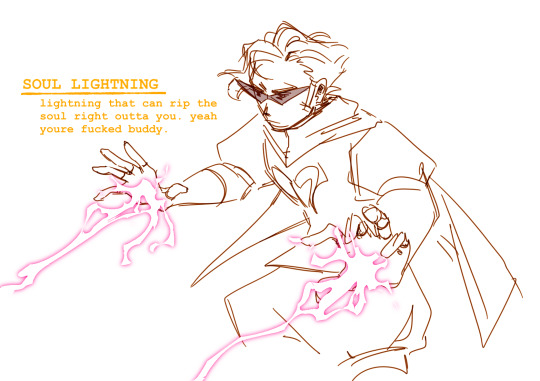
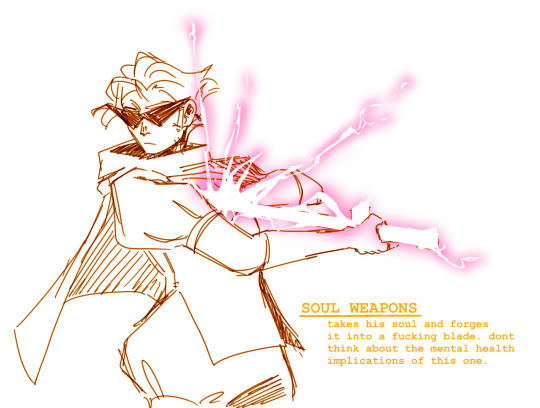
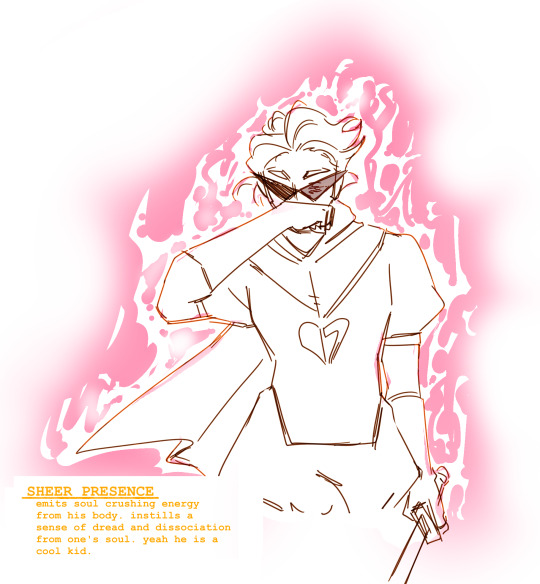
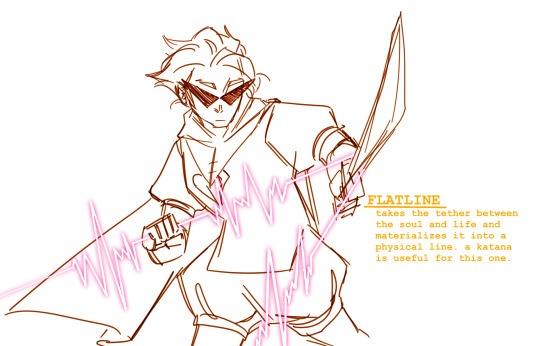

hypothetical godtier abilities for dirk for combat! thinking about doing these for all the kids when i have time hehe
3K notes
·
View notes
Text

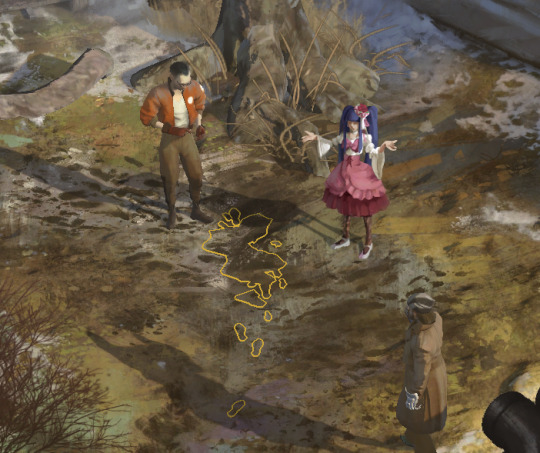
With only the footprints in the mud, this level of reasoning is possible for Furudo Erika. What do you think, everyone!?
8K notes
·
View notes
Text
Claude is by far the most well adjusted of the lords but he's not flawless. What you are pucking up on is how Claude does his own thing independent of Byleth while Edelgard and Dimitri are both deeply emotionally dependent on Byleth. Claude's a very complicated person and character but because he's always holding his whole self back or obscuring parts of himself and his intentions around other people, he is also doing so from the audience so you have to pay attention. Combine this with his subtler character arc because he's much more emotionally stable than Edelgadd and especially Dimitri and most people don't understand Claude. To understand Claude you have to be able to look past the flashiness of the other lords and the series, and piece together clues from throughout his supports and route, most people don't bother they only ever bother getting to know a shallow caricature of him and I get down voted into hell every time I say this.
Claude and Edelgard respond differently. Edelgard has one giant wall but once you are in you are in. So a colder or harsher exterior but passionate and fairly open about her intensions underneath (minus the agarthans). Claude is like an onion there is always a screen no matter how close you get and they are ever shifting so on the surface he is milder than Edelgard but you never see him completely open and honest no holds bared like with Edelgard. Edelgard has a blunt straightforward personality she wants to get straight to the point. Claude will never take a straight path towards what he wants always deflecting and deflecting and misdirecting. They are at their hearts both idealists who care greatly for the people and the world and who are motivated to build something better. Both are able to put their emotions aside and make the decisions that need to be made. Edelgard is willing to cost the entire continent in her war if it means she gets to build a better society out if the rubble. Claude is interesting as he is more willing to sacrifice in Hopes where as in Houses he tries to have a prosperous nation unaffected by war AND win the war, and trying to have his cake and eat it too is what potentially costs him everything in Houses.
17 notes
·
View notes
Text
Sylvain Character Analysis
Sylvain gets introduced as a relentless flirt and cheater. a rather shallow frivolous man who can't be serious and apply himself. and then we learn things like he's incredibly smart and can understand at a glance complex magic math textbooks that have the magic scholar annette stumped. he likes board games (other's in the board game club are edelgard, hubert, claude, and yuri. you know team scheming). he's a horse boy and a clean freak who thinks the monestary's cafeteria is filthy. And as ashe's supports show he genuinely want to help people and has a lot of traits that ashe thinks are knightly, noble, and gallant. Sylvain enjoys the arts and is quite the reader. Under the flippancy he also has one of the strongest sense's of duty and responsibility as he is one of the few character where all his endings have him becoming margrave because he feels obligated to its people and to negotiating peace with sreng. most of the other nobles have some endings with them taking power and some where they go off to travel the world as adventurers. for someone so dedicated to being not serious he's also oddly deferential to authority. oh yeah and miklan his brother repeatedly tried to kill him.
and through all this the audience starts to piece together sylvain as a person and what makes him tick. miklan was not kicked out of the house until sylvain was 18 and a childhood of being tormented, the heavy expectations of his father and nobility, and the relentless pursuit of sylvain by women wanting to marry into house gautier have left him deeply jaded about the nobility and crest system, with low self worth, and engaging in a lot of self sabotage and emotional self harm. Sylvain hates all the women he flirts with and dates. and he sets up all his relationships to fail. by advertising himself with his family name and crest he will attract women that are interested in those things. Then when the women inevitable get fed up with his lying, cheating, bullshitting ass and dump him he takes it that he was right all along that they only wanted him for his family name, crest, etc. thus justifying his treatment of them in his mind. so he's shooting himself in the foot in an endless cycle to prove that no one actually cares about him and all women care about are crests and power.
sylvain believes that he doesn't have worth beyond his crest and nobility and this also manifests is a disregard for his life as in several supports he's noted for being reckless or taking blows for others that leave his seriously injured. And despite this all he still can't stop helping others. and he has nothing but love for his friends despite them having the things he always wanted like a loving older brother. Sylvain deliberately plays himself off as a useless flirt who lazes off partly as a passive aggressive rebellion against his father and his expectations for sylvain to be a perfect noble and partly because of his low self worth. he's self aware of his own bullshit but has resigned himself to it as his annette supports show. He actually believe's he's nothing more than a worthless flirt.
Its only with the war and the responsibility over the actual lives under his command that sylvain shapes up because its no longer just his life to waste but all those under him will suffer for his incompetence. sylvain continues to struggle through part 2 and here his development is mixed depending on route and supports. Through some of his supports like with dorothea and mercedes he is forced to confront his behavior. Such as when Dorothea offers him unconditional companionship he is forced to reckon with all the shallow double standard ways he has treated other women. or with mercedes when he finally acknowledges how the crest system has hurt him and finally starts to heal. his war time monastery dialogue is mixed with him seeming to improve on some route and seeming to fall back into his old bad habits in others. which again makes it notable that in all his endings he shapes up to competently rule gautier
more sylvain thoughts here: https://semi-imaginary-place.tumblr.com/post/688934110917443584/rfireemblemthreehouses-support-chart-for-all
670 notes
·
View notes
Text
While I do understand wanting better versions of the supports that were in the game for example a Dimitri Raphael support chain about Raphael helping Dimitri process the trauma of losing his parents, or adding an Ashe Yuri support since they share similar childhoods, or deleting half the Claude Ingrid support chain because the whole thing would have been better as a C-B support chain. Most of the time the people crying about wanting more supports getting what they want would only make the game worse. What is the harm in more supports you ask dear strawman? Well, the ratio of B and A supports itself and their distributions are a part of character characterization.
Let us take Sylvain as an example. I see so many people saying such things as "Sylvain and Bernadetta deserve an A support!" "Sylvain and Marianne are so cute we were robbed of an A support" and these statements almost always have more to do with shipping (which is always highly biased on the individuals personal preferences) than what actually makes sense for the characters involved. if you pay attention these people are usually calling for romantic A supports. The fact that Sylvain despite having many B supports has only 4 A supports, the lowest of any student provides further provides evidence for what is implied throughout his lines in the game. Most other students have closer to 9 A supports so Sylvain's 4 is highly unusual.
The low number of A supports is inline with Sylvain's characterization in game as someone who has destroyed their ability to form meaningful bonds with other people. If you look at who Sylvain A supports with, they all have something specific that let's them get through to Sylvain while dodging the loaded minefield he has designed so he has flimsy justification to say they only interacted with him for superficial qualities like his family name, crest, money, looks/etc. Ingrid and Felix are Sylvain's close childhood friends that have known him for most of their lives and whom Sylvain cherishes and is loyal to. Mercedes and Dorothea are two of the most emotionally intelligent and competent characters in the entire cast, the two of them could crack anyone open. Mercedes and Dorothea are also two women Sylvain is interested in as his latest conquests which keeps his interest and allows the relationships to deepen when the two of them eventually push.
Sylvain has long closed his heart so only those already in there or those that can navigate along a knife's edge have the chance to actually achieve emotional intimacy with him. If the game were to have had more A supports for him that would have changed his characterization. The low number of A supports serves as evidence of how messed up Sylvain is that Felix, Ingrid, Mercedes, and Dorothea are the only people that can get around his self sabotage habits and numerous coping mechanisms to get at the person beneath them. Sylvain dates women in a really toxic manner and actually forming a genuine relationship with him is like navigating a minefield most people can't so it. When women break up with him for cheating and lying he uses it as justification that women after him only want him for his crest and family status but also advertised himself with those very traits. You have to wade through like 15 miles of bullshit and fake doors and booby traps with Sylvain. And the only people who can do that are Felix and Ingrid who already have an established trust bond with him, Mercedes who is a saint and very kind and patient, and Dorothea who has some of the highest social intelligence and can see straight through his bullshit to the heart of his insecurities.
But let's look at a few of Sylvain's B supports and see why it wouldn't work. Bernadetta and Marinne both can't break through that final push because they are weight down so much by their own issues. There's lots for Marianne and Sylvain, their problems with the crest system and their love of horses, but Marianne's character development really only happens on Verdant Wind and even then she I think she'd be too clumsy to close the gap with Sylvain during the span of the game. Because a relationship isn't just about 1 person doing things for the other like Sylvain helping Marianne with her problems, its both of them coming together. Dimitri is a similar case, and additionally Dimitri just doesn't get it. Ingrid similarly also gets taken in by superficial personas but she's so intensely loyal that she manages to brute force her way through. Dedue isn't particularly invested in Sylvain they find mutual respect but there isn't a spark. Ashe and Annette are similar cases where they come to appreciate Sylvain but can't get through to him. The Lorenz one was comedy and very funny, they hate each other. They are both flirts but that is all they share, they are complete opposites in almost every way under that. Lysithea doesn't really like Sylvain she's come to like a neutral by the end of their B support. Hilda sees through Sylvain's fake ass and doesn't want him. Sylvain's not interested in Leonie. Flayn is too savy of Sylvain's bullshit to get too close. Manuela also realizes Sylvain is a fake little bitch and also doesn't want him. Dorothea and Mercedes were the only two that went "I can fix him" and actually had the skills to do so.
Now you might have noticed that some of the B support characters above might have been able to reach authentic emotional intimacy with Sylvain given some more time and you would be correct. So far I have only talked about what happens in canon in the game. It is totally possible with many of these that given the right circumstances and catalyst Sylvain and another character could have gotten much closer or it could happen after the curtain falls for the game. As always it is important to be able to distinguish that actually happens in a work from the infinite possibilities that lay outside of canon.
side note: Sylvain even has less A supports than most of the Church members. The only two in base game with less supports are Gilbert who is a sad sack of shit and deserves less, and Rhea who is nonplayable, has issues, and has shut herself away from the world to all but Byleth.
43 notes
·
View notes
Text


FINALLY!!!! years of blood sweat and tears are OPEN SOURCE and PUBLIC‼️
https://pacthesis.neocities.org
what to do with these (.fla) files? ☕️ exhume the corpse of adobe flash ☕️ make fun of how i code ☕️ whatever the hell you want
481 notes
·
View notes
